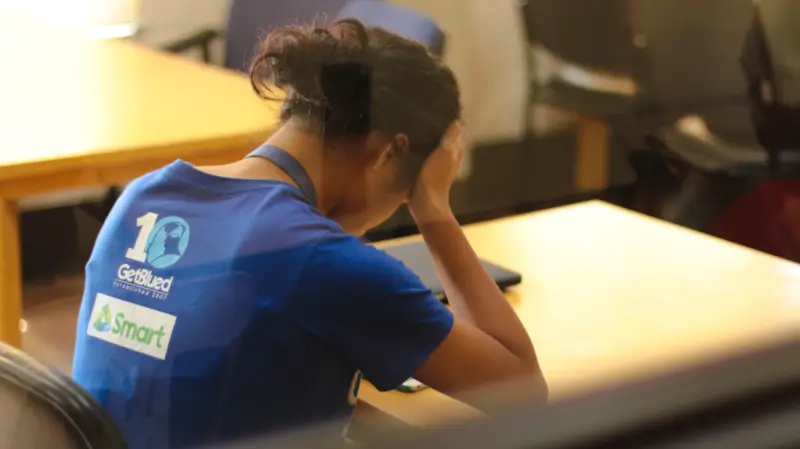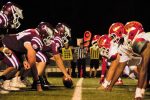There are more than 460,000 National Collegiate Athletic Association (NCAA) student-athletes across the United States, according to the NCAA website. The idea that student-athletes have it easier than the average student is a myth that is alive and well today. But is that all it is? A myth?
The NCAA provides guidelines for students in all three of their competitive divisions in order to keep students focused on graduating and not just athletic performance. The website also lays out the requirements to keep student-athletes up to par for success. “We believe success in the classroom is just as important as winning on the field, we have standards to ensure student-athletes make progress toward a degree—every year and every season,” the website says. Students need to meet these standards to be eligible to play.
Hannah Walleck, twenty-three and a previous student-athlete from Loyola Marymount University (LMU), says meeting the eligibility requirements as a water polo player was anything but easy. “People don’t understand what it’s like to be a student-athlete until you are one,” she says. “You eat, sleep and breath school and sports; it consumes your entire life.”
In Walleck’s case, she says she had to meet with at least two counselors to make sure she was meeting scheduling requirements for both academics and sports. However, she says she only had time for classes, homework, practices and games, but not much else. Her athletic counselor would perform grade checks every so often to maintain eligibility for matches.
Most, if not all, colleges require a minimum GPA for student-athletes to stay on their sports team, as well as receive scholarship money. According to athleticscholarship.net, students must hold a 2.0 GPA in order to maintain eligibility for scholarships.
For Walleck, at LMU a 2.0 was also the minimum. However, if athletes fall between a 2.0 and 2.5 GPA, they are required to attend study hall and tutoring for a minimum of ten hours a week. Student-athletes, specifically those at LMU, had to be enrolled in twelve to fifteen credit hours in order to meet athletic participation requirements. “They always recommend you enroll in fifteen (credit hours) in case you had to drop a class so that you’d still be okay,” Walleck says. “I’ve had to drop classes many times before.”
With ten hours of required studying and tutoring, twelve to fifteen credit hours of class time, practices and matches, one might ask: what about a social life?
Water polo is a spring sport which makes the fall semesters easier on players as far as studying and practice balance goes. Walleck says her freshman year was difficult, but as the years went by they increased in difficulty because of harder classes.
When class difficulty increased and spring came along, studying time reached twenty to thirty hours per week for Walleck. She says her professors did not let her slack off, and often they were stricter because she was a student-athlete.
The Health Triangle is a familiar teaching mechanism, and meme, used to describe the amount of mental, social and physical health priorities a person should keep to be considered well-balanced. As a meme, the triangle is often adapted to fit a student’s lifestyle, where you could only choose two of the three options: enough sleep, a social life and good grades. Walleck says she would have fallen somewhere between good grades and enough sleep, though sleep was often still elusive for her. “The options for me would be more of a square: practice, good grades, sleep and social life,” she says. “And then if I had to pick two it would be practice and good grades.”
As a student-athlete, the hours of the day start passing you by and the prospect of a social life becomes slim to none. Between studying, class, practices and games, your team eventually becomes your only source of a social life. This means that soon enough you might need a break from your team, though the social bond will often further the team’s connection and chemistry.
Walleck says being on a team is like having siblings, “you can only take so much when you live with them and eventually you need an outlet.” Though, Walleck says that she is proud that all her hard work wasn’t for nothing; the women’s water polo team won the Golden Coast Conference championship the same year that they ranked third in GPA averages across all LMU athletics.
Participating in a sport throughout high school often motivates students to play on a collegiate level with hopes of one day playing professionally. However, most students understand that they will not play past a collegiate level. The NCAA website includes multiple resources for student-athletes looking towards “Life After the Game.” Life after playing sports in college also leaves room for depression to set in for some graduates. The website includes a program that helps students that are struggling with finding a job after college and a persistent longing for their sport.
Unfortunately, Walleck did not stay at LMU and decided to take a step back to find a better financial choice for the rest of her education.
Less than 2 percent of collegiate student-athletes move on to become professionals, according to the NCAA website; though a few of Walleck’s teammates moved on to play sports professionally. “To me, education is much more important,” Walleck says. At sixty thousand dollars a year, not knowing what to do meant she needed to figure something out. Walleck now attends Citrus College as a communications major, but says she would pick up collegiate athletics again in a heartbeat.
“Average students don’t understand how much effort and time goes into a sport,” Walleck says. “Your time management skills need to be almost perfect for you to even survive, let alone thrive. Most students who don’t play a sport miss out on learning these skills because they have more free time and have a harder time learning to balance time because of it.”
With extra responsibilities, required study hours and strict GPA requirements, the life of a student-athlete doesn’t seem like such a breeze.

















